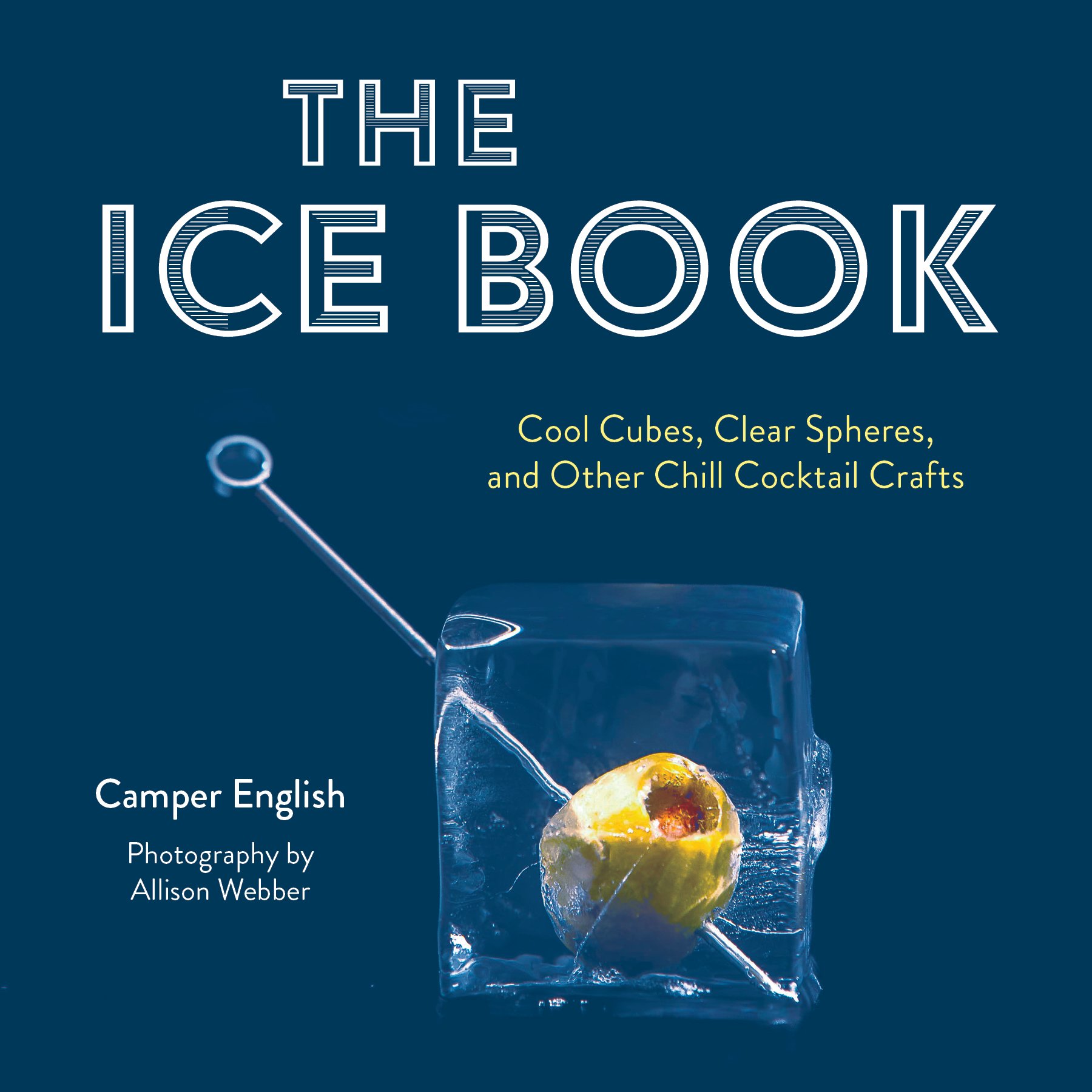The Ice Book By Camper English Shows How to Best Make, Store & Serve It
Artisan ice is becoming de rigueur, and barkeeps need to know all the pro tips, tricks, and tools. We talked with Camper English, Alcohol Professor contributor, a self-described “ice nerd” and renowned San Francisco-based author and expert on cocktails and spirits. His new book, The Ice Book: Cool Cubes, Clear Spheres, and Other Chill Cocktail Crafts will be out on May 2, 2023.
How did The Ice Book come about?
Well, I have been experimenting with making clear ice and other awesome forms of ice for more than a decade now and eventually it became time.
What do people need to know about making artisan ice?
Well, most of the book is techniques for making clear ice at home in a basic freezer. There’s a need for that because even though I have 10 years of information online…people are still discovering it anew. Instead of a person having to read a series of 75 blog posts, I wrote one little book that basically summarizes it. As I’ve continued to learn more and refine the techniques, I’ve been able to put that all into the initial explanation of how to make clear ice in particular. Plus things to look for and mistakes that can come up. It’s a condensed form of the work that I’ve been doing for a decade.
This work is all based on a technique that you developed called directional freezing. Can you explain what that term means?
I did a lot of experiments to try to figure out how to make clear ice and initially, I thought I was just going to try to disprove the ineffective ways such as boiling the water or melting ice, and then freezing it again. I didn’t expect to find a simple solution to the problem but after much trial and error, that method is essentially using an insulated container to control the direction in which water freezes into ice.
In this case, from the top down to the bottom. Initially, I was calling that [technique] things like “the pond method” or “the cooler method.” But, when a lot of different people were talking about it, we all sort of naturally settled on directional freezing as the terminology for it. So, is it sort of a natural way to describe a natural process.
Is this directional freezing cooler method what people do in restaurants and bars?
Camper English photo courtesy of the author
Well, because there are machines that make clear giant blocks of ice for sculptures, my goal was to create a method that people could use at home with no machinery or moving parts. There are many bars using the method. Real small bars for the most part. Or bars that have a lot of freezer space. So for example, there’s a bar in San Jose called Haberdasher and they have a walk-in freezer, and they have a whole bunch of these shallow wide coolers and they just freeze it, like I do at home, but then they cut it up with a band saw, so they do an industrial size version of what I’m doing in my freezer.
What else are we going to learn from your book besides directional freezing? What are some other tricks that you might be sharing?
The beginning of the book is about how to make clear ice, and then how to make it in different shapes and forms. Spears, and spheres, and punch bowl blocks. Then we go into how to freeze things inside of ice. Garnishes that normally go on top of the drink can be put inside the ice cube for a cool visual effect. And ways to hack ice cube trays that you might already own to make clear ice in shapes like skulls and letters and a death star! And then, in the final section of the book we look at some unclear ice–colored ice or flavored ice. I finished the book just at the point that some of the really cool new ice designer tools for embossing ice came out but we got pretty far with a meat mallet. Also wax stamps and barbecue stamps that you can use to make monogrammed ice.
You also include cocktail recipes to make with your elevated ice.
Yes. Classic cocktails that cater to the ice.
I’m curious about failures. Have you tried some things that don’t exactly work?
My experiments failed the first bunch of times, routinely. I’ve always been a person that likes to share failure. It’s showing the process…I tend to be like, “oh, I’m trying this out, but it didn’t work and here’s pictures of my failure.”
In preparing to photograph the ice for the book,. I had to make it all in advance because we had a four or five day window, and I have my just home freezer, plus a little half size stand up freezer in my one bedroom apartment. Between those two devices I made all of the ice and I could store almost all of it, but I ended up having to rent some space for a couple weeks in a bar’s freezer. …then we were photographing in an apartment across the city. And so, every day I had to pack up the ice in a way that wouldn’t break or melt in an Uber. Let’s just say I didn’t sleep well for the entire week, I was so worried about the ice melting. It was really an intense process. That said, the photos [by former bartender Allison Webber] came out so spectacularly good. I think they’re the best pictures of ice I’ve ever seen.
Photographing ice is hard because if it’s beautiful, it’s perfectly clear and you can’t see it. So that’s a really difficult task.
Yeah, there were some interesting challenges. We had waterproof backgrounds and a stylist, but a very fun project to get through together.
What explorations are next in your ice journey?
Bowl of ice flowers
I interviewed some bartenders on what tools they use to carve diamonds and things like that. I‘m testing those out to see what works well for me. I make ice in boxes in my giant cooler to make three inch cubes. And then I spend another bunch of money on chisels and tools. The whole clear ice thing can be a nearly free arts and crafts project that you do in your freezer.
Really, it’s just frozen water!
But I manage to spend all my spare income on ice. Because I guess I’m just that into it.
This interview has been condensed and edited for clarity.




